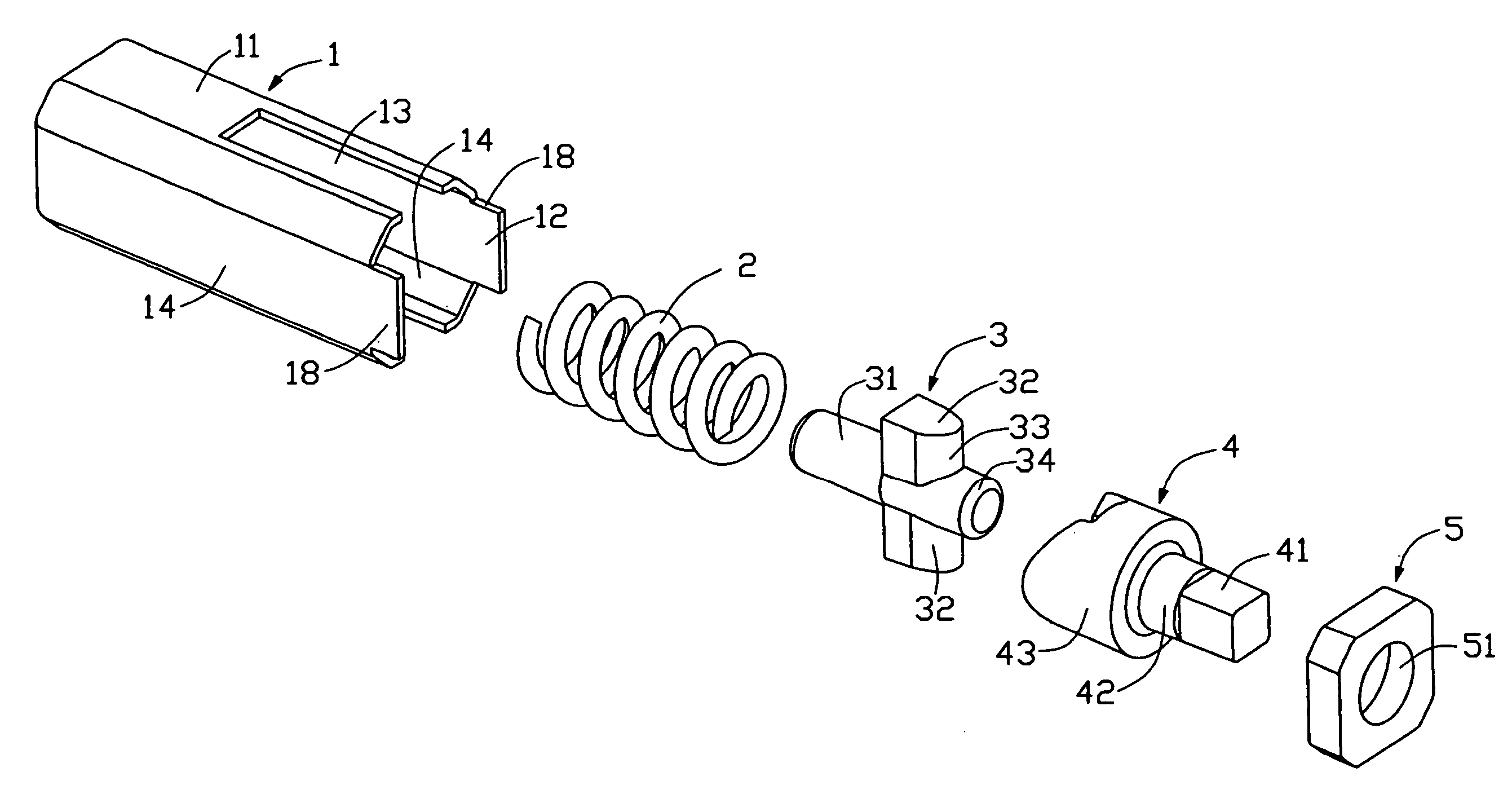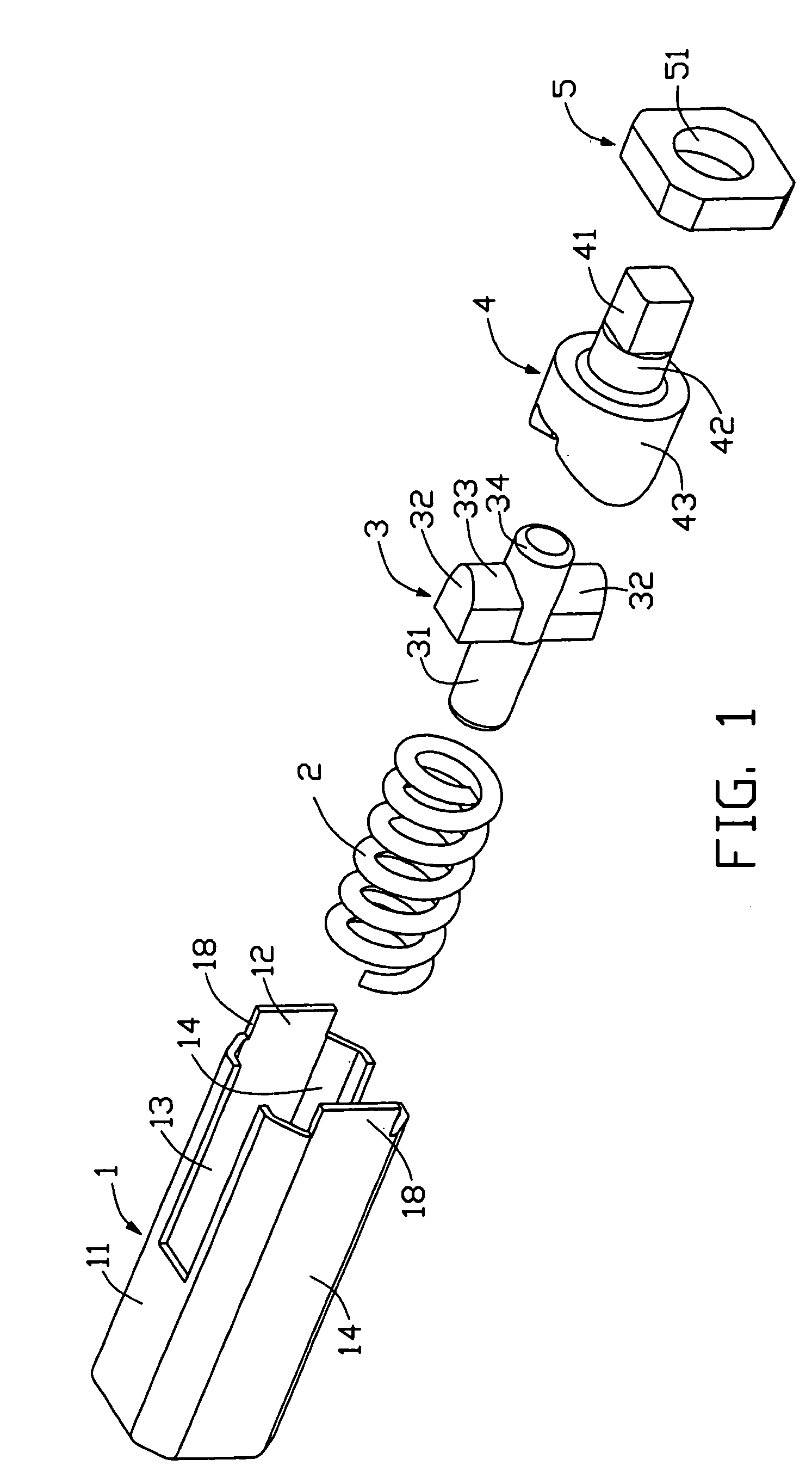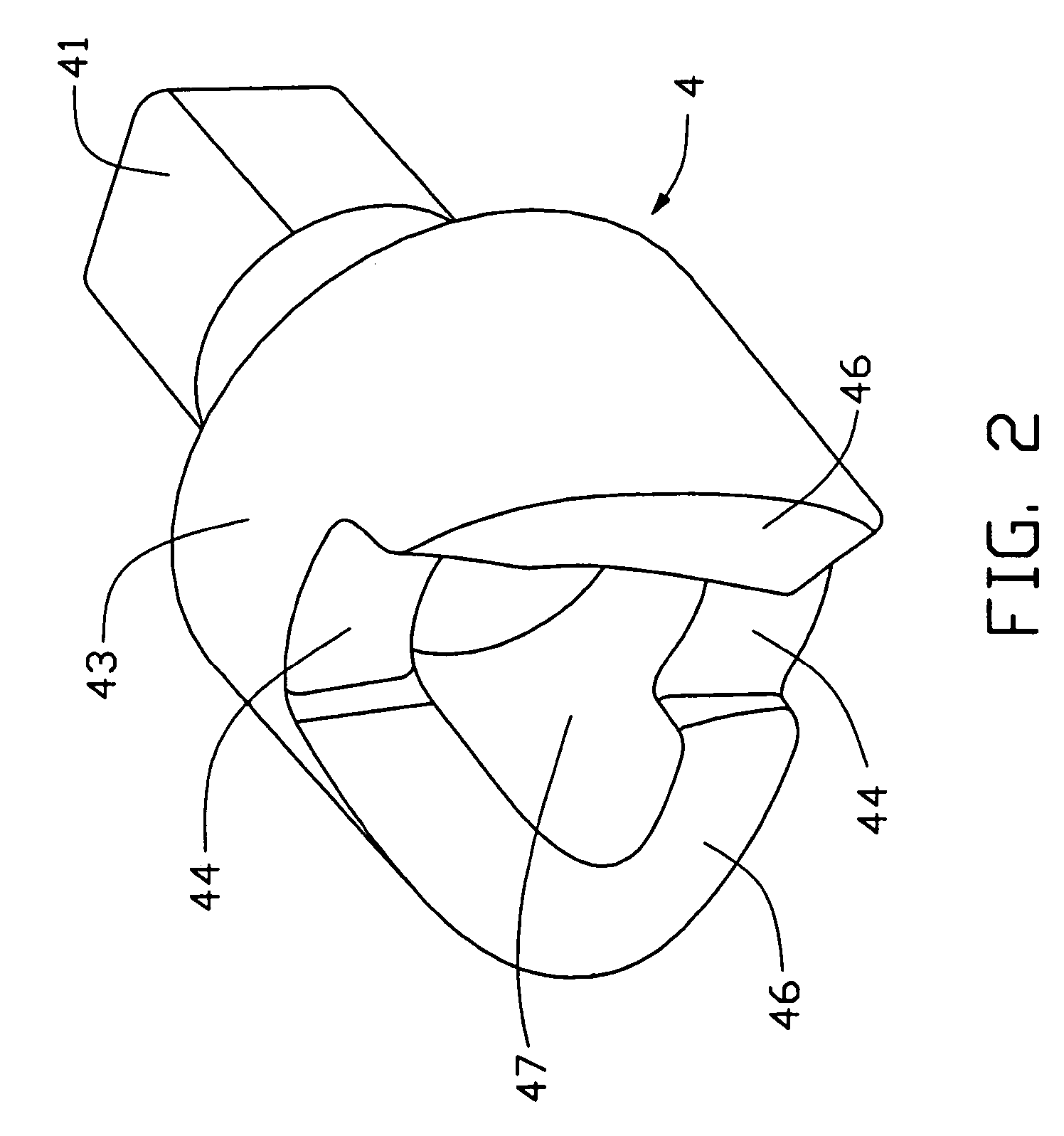Hinge assembly
a technology of hinges and parts, applied in the field of hinges, can solve the problems of difficult to keep the spring b>24, the second hinge member b>23/b> cannot move smoothly and stably relative to the first hinge member, and the longitudinal movement of the spring is difficult to achieve, so as to achieve the effect of reducing the siz
- Summary
- Abstract
- Description
- Claims
- Application Information
AI Technical Summary
Benefits of technology
Problems solved by technology
Method used
Image
Examples
Embodiment Construction
[0016]Referring now to the drawings in detail, FIG. 1 shows a hinge assembly. The hinge assembly comprises a can 1, a spring 2, a cam follower 3, a cam member 4, and a washer 5.
[0017]The can 1 has an elongated octagonal shapes which is sealed at a rear end thereof and is open at a front end thereof, thus forming an open end 12. Two opposite top and bottom walls 11 of the can each define an axially extending groove 13. Two opposite sidewalls 14 of the can 1 each form a retaining protrusion 18 extending axially at the open end 12 of the can 1.
[0018]The spring 2 is made of metal and is spiral-shaped.
[0019]The cam follower 3 is cross-shaped, and includes a shaft 31. Two tabs 32 are perpendicularly formed on the shaft 31, leaving a front end 34 of the shaft 31 extending therebetween. The two tabs 32 are located 180 degrees from one another on the surface of the shaft 31, and each of the tabs 32 has an engaging surface 33, preferably an arcuate smooth surface.
[0020]Referring also to FIG. ...
PUM
 Login to View More
Login to View More Abstract
Description
Claims
Application Information
 Login to View More
Login to View More - R&D
- Intellectual Property
- Life Sciences
- Materials
- Tech Scout
- Unparalleled Data Quality
- Higher Quality Content
- 60% Fewer Hallucinations
Browse by: Latest US Patents, China's latest patents, Technical Efficacy Thesaurus, Application Domain, Technology Topic, Popular Technical Reports.
© 2025 PatSnap. All rights reserved.Legal|Privacy policy|Modern Slavery Act Transparency Statement|Sitemap|About US| Contact US: help@patsnap.com



